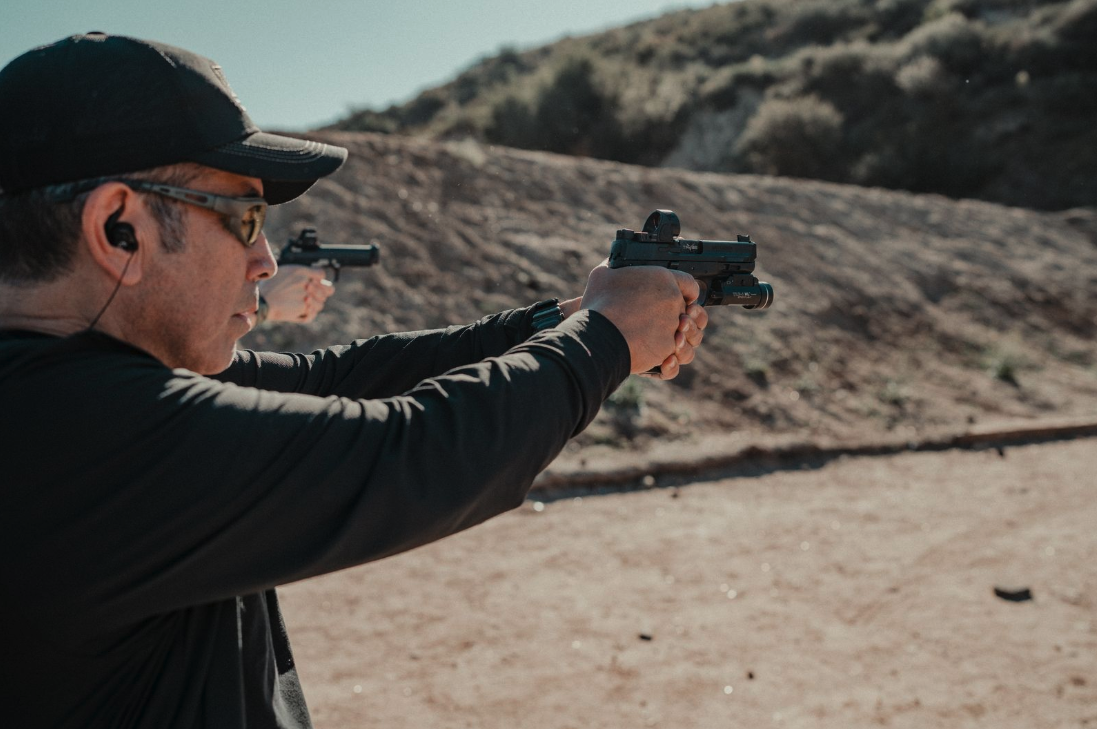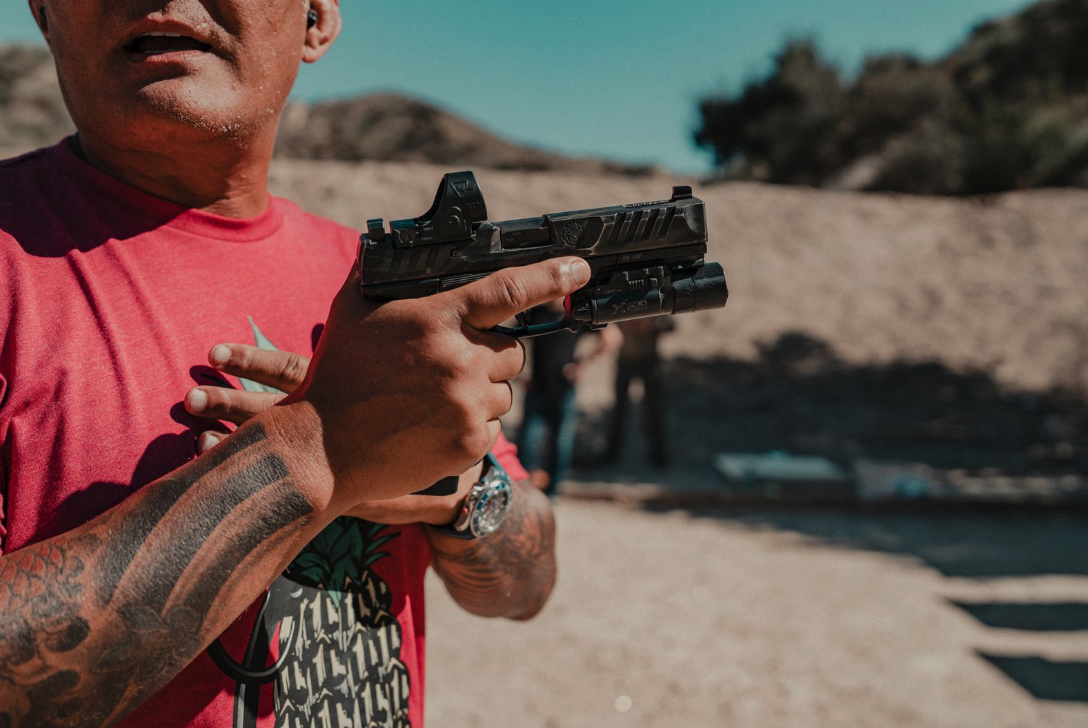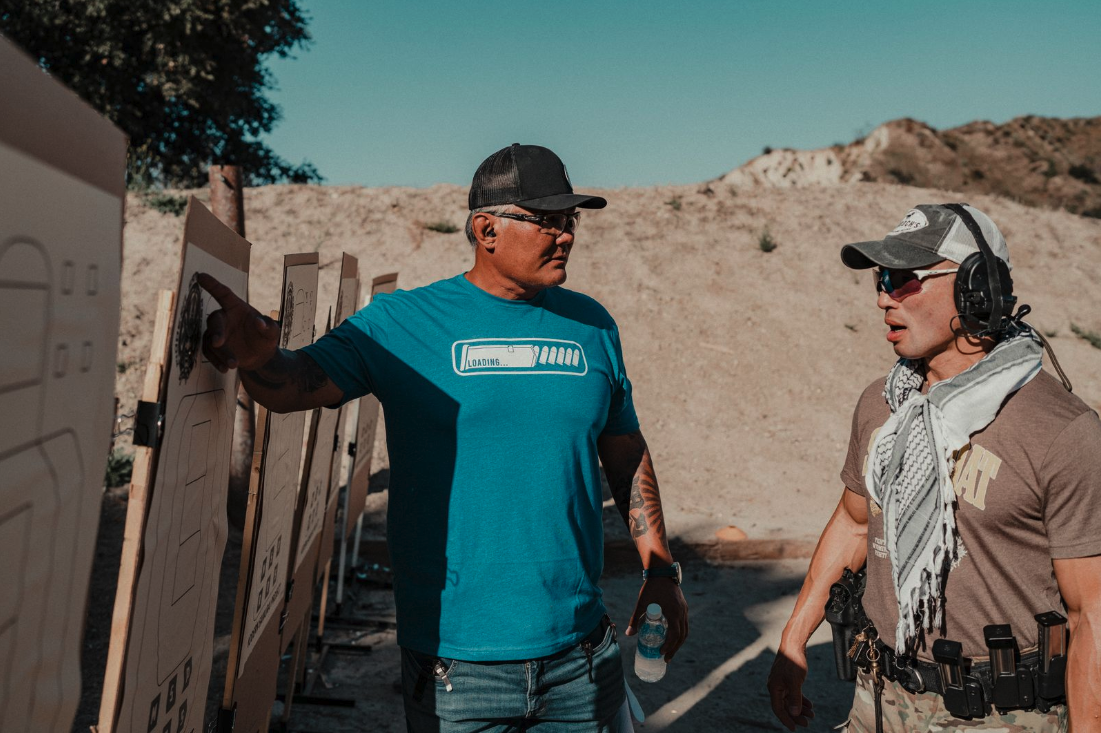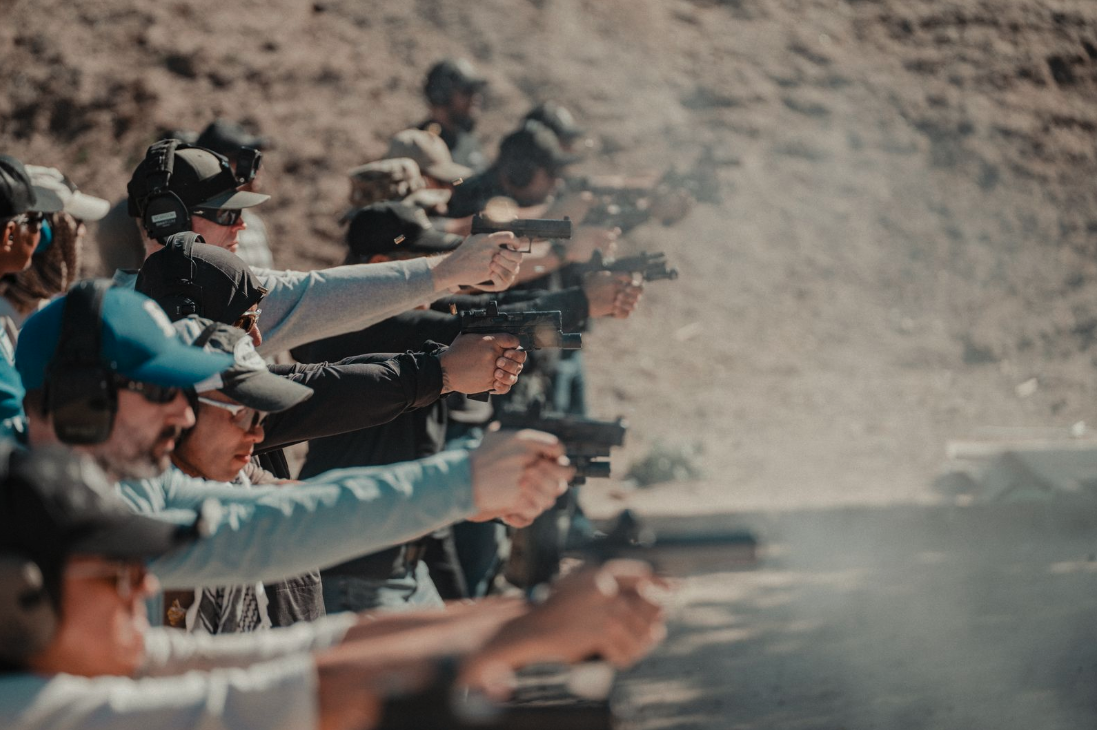HOP Blog
Inside the Mind of Scott ‘Jedi’ Jedlinski: The Modern Samurai Project
Scott Jedlinski, founder of the Modern Samurai Project, is a renowned red dot pistol instructor and lifelong martial artist.
With a background that spans Taekwondo, Muay Thai, and Brazilian Jiu-Jitsu, Scott’s unique perspective on firearms training and dedication to teaching red dot-equipped pistol skills has made him a sought-after expert in the industry.
Here, Scott shares his training philosophy, his daily carry setup, and what sets the Modern Samurai Project apart from other firearms training organizations.
About Scott Jedlinski: The Mind Behind Modern Samurai Project
Scott Jedlinski, known in the industry as “Jedi,” is a lifelong martial artist and firearms instructor whose training approach fuses precision shooting with the discipline of martial arts.
A Master-class USPSA shooter, Scott holds elite recognition as the 16th recipient of the prestigious F.A.S.T. Drill coin and the fourth to achieve the Point 1 Elite Standards Coin. With hundreds of hours of training under the best in tactical, self-defense, and competitive shooting, Scott brings a unique expertise to his classes, particularly in red dot-equipped pistol instruction.

His skills and insights have been featured in top publications like Primary & Secondary, Recoil Magazine, and the NRA’s Shooting Illustrated, and he’s been a guest on popular shows such as Ballistic Radio and Firearms Nation. Scott has trained elite teams, including Pentagon ERT, NYPD Instructor Cadre, FBI Tactical Units, and various SWAT and tactical associations nationwide.
At the core of the Modern Samurai Project, Scott’s mission is clear: to elevate students’ capabilities through a mastery of principles, technique, and relentless repetition.
Without further ado, let’s pick Scott’s brain to find out what makes the Jedi tick.
What’s Your Favorite Movie of All Time?
Scott: “The Last Samurai. It really resonates with me on multiple levels, from the warrior mindset to the commitment to mastery.”
Everyday Carry Setup
Scott: “I carry my appendix pro model holster from Tier One Concealment and a five-inch steel-framed Walther PDP. For ammo, I typically use Hornady 135-grain +P, though I recently started trying out 124-grain HP from HOP Munitions, which seems to work great.”

When asked about carrying a spare mag, Scott expanded on his practical reasoning with a mix of personal philosophy and anecdotes from his time training alongside some of the top operators in the field.
Scott: “Yes, I carry a spare mag—not necessarily because I think reloads are critical in a civilian context. My pro model holster doesn’t print, and the weight distribution works so well I don’t even notice it. It’s like, why not have it? It doesn’t cost me anything in terms of concealment or weight. Better to have it and not need it than need it and not have it.”
Scott adds context by sharing insights from Navy SEALs and other top military personnel: “Most of the shooting we’re doing, whether in practice, teaching, or competition, involves reloads. Now, I’ve heard a couple of Navy SEALs say they don’t carry spare mags, but here’s the thing: their pistol is their spare mag. They’re working in high-stakes environments where if they’re reaching for a pistol, the situation’s already gone sideways.”
Scott’s takeaway from these experiences is rooted in practicality. He carries a spare mag not because it’s essential for everyone, but because it’s a no-cost addition in his setup that can make all the difference in a worst-case scenario.

What’s Your Favorite Thing to Do When You’re Not Shooting or Instructing?
Scott: “Driving my car fast. Really fast. I’m constantly adding upgrades to make it faster.”
Scott’s passion for speed and adrenaline seems to carry over into his training methods, emphasizing efficiency and peak performance both on and off the range.
Do You Still Practice Martial Arts Regularly?
Scott: “Yes, though it’s challenging with my schedule. I try to get in two to six sessions a month. I make it a point to train with black belts in various disciplines to keep my skills sharp.”
His commitment to continuous improvement shows through his training routine, even as he balances a demanding schedule.
What Led You to Become a Firearms Instructor?
Scott: “Living in Northern Virginia, it’s nearly impossible to train in Brazilian Jiu-Jitsu without crossing paths with ‘face shooters’—military and law enforcement professionals. One of my friends, a State Department Mobile Security Division guy, was a three-year white belt due to constant deployments. I helped him progress in Jiu-Jitsu, and he returned the favor by teaching me how to shoot.”
This introduction to firearms, coupled with his passion for martial arts, led Scott to develop his unique style of instruction that combines discipline, technique, and practical philosophy.

How Did You Get the Nickname ‘Jedi’?
Scott: “My last name, Jedlinski, is a nightmare for most people to pronounce. I moved around a lot growing up because my dad was in the Air Force, and people would always struggle with my name. Eventually, they started calling me ‘Jedi,’ and it just stuck. Way easier to remember!“
His nickname, “Jedi,” reflects both his martial skills and his ability to simplify the complex, which he also brings to his instruction style.
What Sets the Modern Samurai Project Apart from Other Training Companies?
Scott: “I was probably the first guy to offer a formal class dedicated to the red dot-equipped pistol. What really makes us stand out is our focus on four key components in training: philosophy, principle, technique, and repetition.”
Scott explains that understanding “why” you’re doing something is essential: “Take the philosophy piece, for instance. You can’t convince someone who’s anti-gun that they need a gun for self-defense. They need to see that need for themselves, sometimes after something happens or their situation changes. Same goes for those who don’t see the value in competition shooting—it’s a waste of time to them until they realize it could help them get better.”

Scott emphasizes the importance of learning technique before repetition: “Some people think they can skip the technique and just rep, rep, rep, but you can’t become efficient without understanding the technique. It’s like procedural memory—you’re building a process that your body can rely on.”
What Are Your Future Goals for the Modern Samurai Project?
Scott: “I’m looking to make a competitive comeback. I’ll probably go into USPSA Limited Optics and maybe hit a major or two next year. On the business side, my goal is to keep doing what I’m doing, refine my own skills, and bring those back to my students.”
Scott is also working toward a few personal goals: “In the next couple of years, I want to get my black belt in Brazilian Jiu-Jitsu and earn my Grand Master card in USPSA. It’s all about continuing to push myself to the next level.”
Wrapping It Up!
Scott Jedlinski’s dedication to martial arts and firearms training exemplifies the spirit of continuous improvement and discipline.
His Modern Samurai Project reflects his unique approach to instruction, blending philosophy, technique, and repetition to help students master their craft.
To learn from one of the best in the field, visit Modern Samurai Project and sign up for a class that will take your skills to the next level.


